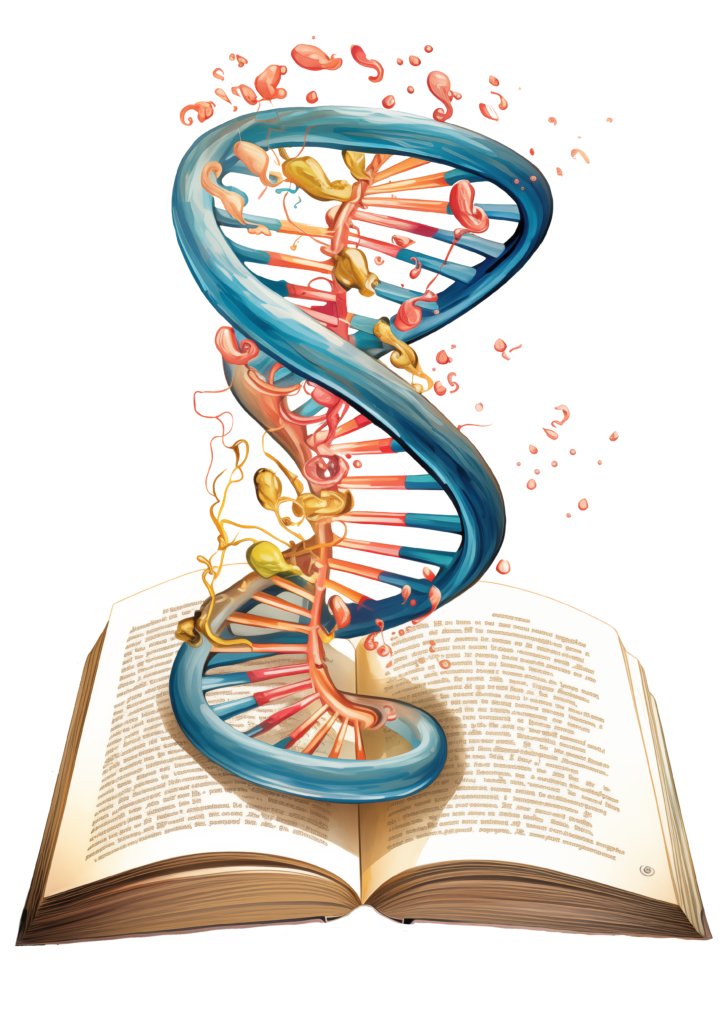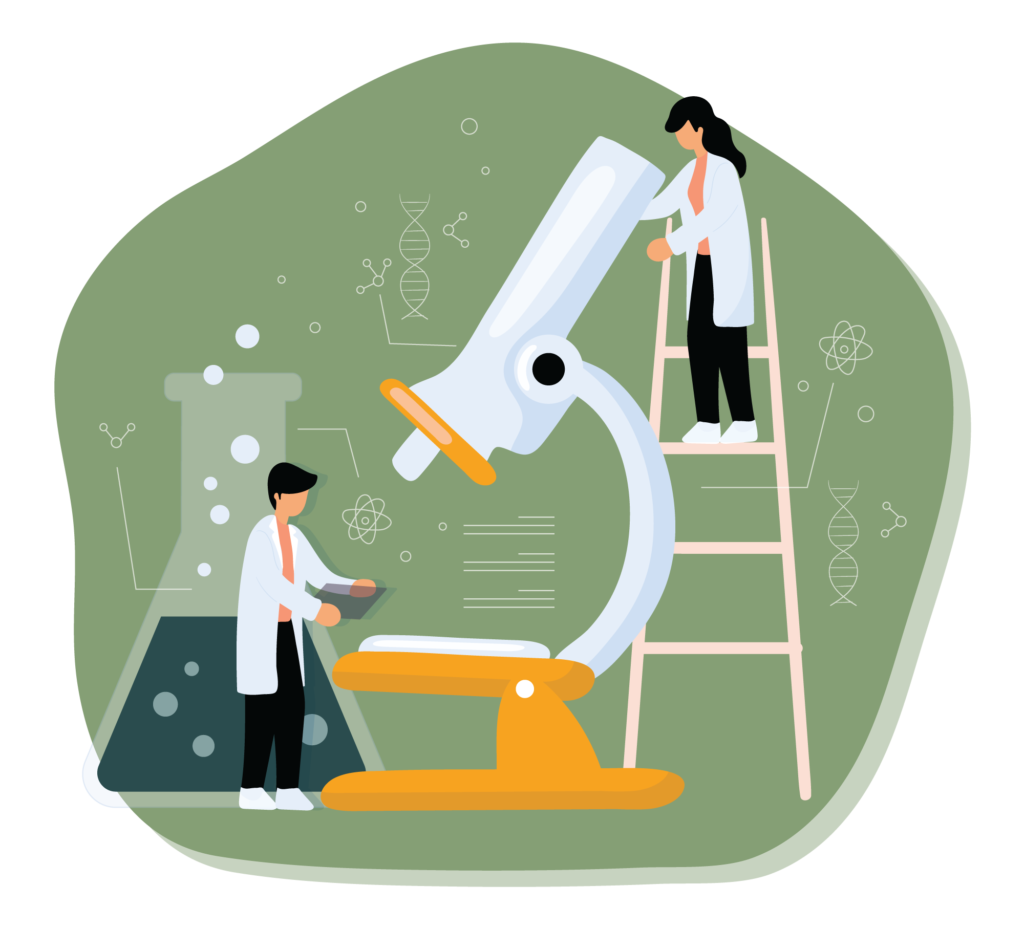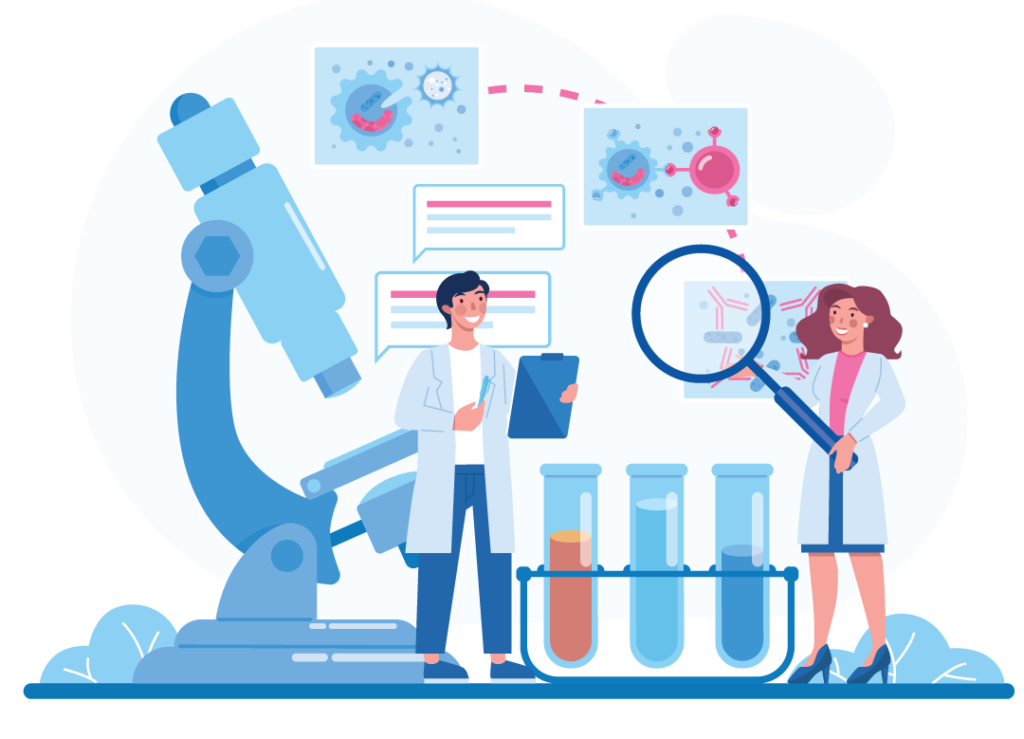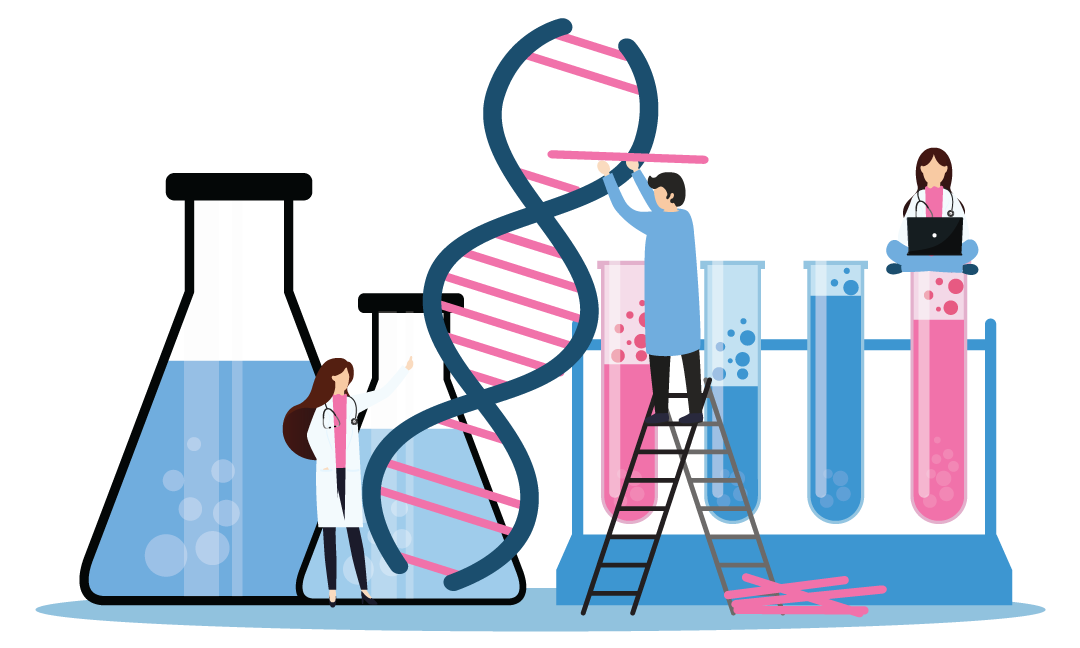What Is DNA?
What is DNA?

DNA (Deoxyribonucleic Acid) is a complex molecule that contains the instructions an organism needs to develop, live, and reproduce. Here is a more detailed look into what DNA is and how it functions:
Structure of DNA
- Double Helix: DNA consists of two long strands that coil around each other to form a double helix. Each strand is made up of simpler molecules called nucleotides.
- Nucleotides: Each nucleotide contains three components: a phosphate group, a sugar molecule (deoxyribose), and a nitrogenous base.
- Nitrogenous Bases: DNA contains four types of nitrogenous bases: adenine (A), thymine (T), cytosine (C), and guanine (G). These bases pair specifically (A with T, C with G) through hydrogen bonds, forming the rungs of the DNA ladder.
Function of DNA
- Genetic Code: The sequence of these bases encodes genetic information. This code is read in sets of three bases, known as codons, each of which specifies an amino acid.
- Protein Synthesis: DNA sequences are transcribed into RNA and then translated into proteins. Proteins are the molecules that perform most of the functions in cells, including catalyzing metabolic reactions, replicating DNA, and responding to stimuli.
- Replication: DNA can replicate itself, ensuring that each new cell has the same genetic information. During cell division, the double helix unwinds, and each strand serves as a template for the formation of a new complementary strand.

DNA Blurb
DNA, or Deoxyribonucleic Acid, is the molecule that contains the genetic instructions for life. Each cell in the human
body contains DNA, which is composed of two strands forming a double helix. These strands are made up of
nucleotides, each consisting of a phosphate group, a sugar molecule, and a nitrogenous base (adenine,
thymine, cytosine, or guanine). The sequence of these bases encodes the genetic information
necessary for the development, functioning, and reproduction of all living organisms. DNA
is responsible for passing genetic traits from generation to generation and plays a
crucial role in understanding inheritance, health, and disease.
DNA, or Deoxyribonucleic Acid, is the molecule that contains the genetic instructions for life. Each cell in the human body contains DNA, which is composed of two strands forming a double helix. These strands are made up of nucleotides, each consisting of a phosphate group, a sugar molecule, and a nitrogenous base (adenine, thymine, cytosine, or guanine). The sequence of these bases encodes the genetic information necessary for the development, functioning, and reproduction of all living organisms. DNA is responsible for passing genetic traits from generation to generation and plays a
crucial role in understanding inheritance, health, and disease.
DNA, or Deoxyribonucleic Acid, is the molecule that contains the genetic instructions for life. Each cell in the human body contains DNA, which is composed of two strands forming a double helix. These strands are made up of nucleotides, each consisting of a phosphate group, a sugar molecule, and a nitrogenous base (adenine, thymine, cytosine, or guanine). The sequence of these bases encodes the genetic information necessary for the development, functioning, and reproduction of all living organisms. DNA is responsible for passing genetic traits from generation to generation and plays a crucial role in understanding inheritance, health, and disease.

Key Functions of DNA
- Genetic Information Storage: DNA stores all the information required to build and maintain an organism.
- Protein Synthesis: DNA sequences are transcribed into RNA, which is then translated into proteins, the building blocks of cells.
- Replication: DNA can replicate itself, ensuring genetic information is passed on during cell division.
Importance of DNA
- Heredity: DNA carries genetic information from parents to offspring, influencing traits and characteristics.
- Medical Research: Understanding DNA helps diagnose genetic disorders, develop treatments, and advance gene therapy.
- Forensic Science: DNA profiling is used in criminal investigations to identify individuals.

DNA and Evolution
- Genetic Variation: Mutations in DNA contribute to genetic diversity, driving evolution and adaptation in species.
- Natural Selection: Variations that offer survival advantages are passed on to future generations, shaping species’ evolutionary path.
Modern Applications
- Ancestry Testing: Traces lineage and provides insights into ethnic backgrounds.
- Personalized Medicine: Tailors medical treatments based on individual genetic profiles.
- Biotechnology: Advances in genetic engineering and synthetic biology rely on DNA manipulation.
Most Common Inherited DNA Diseases
Cystic Fibrosis
- Affects the respiratory and digestive systems, caused by mutations in the CFTR gene.
- Cystic Fibrosis is a genetic disorder that primarily affects the respiratory and digestive systems. It is caused by mutations in the CFTR gene, producing thick, sticky mucus that can clog airways and obstruct the pancreas. This results in severe respiratory issues and digestive difficulties, significantly impacting the quality of life and longevity of affected individuals.
Sickle Cell Anemia
- A blood disorder that causes red blood cells to deform, leading to various health complications. It is inherited when both parents carry the sickle cell gene.
- Sickle Cell Anemia is a hereditary blood disorder characterized by the deformation of red blood cells into a sickle shape. This deformation causes various health complications, including pain, anemia, and increased risk of infections. The condition is inherited when both parents carry the sickle cell gene, passing the mutated gene to their children.
Huntington's Disease
- A progressive brain disorder caused by a mutation in the HTT gene leads to cognitive decline and physical symptoms.
- Huntington’s disease is a progressive brain disorder caused by a single defective gene on chromosome 4. It leads to the gradual degeneration of nerve cells in the brain, affecting movement, cognition, and behavior. Symptoms typically appear in middle age, and the disease is inherited in an autosomal dominant pattern.
Hemophilia
- A bleeding disorder that slows the blood clotting process, typically caused by mutations in the F8 or F9 gene.
- Hemophilia is a genetic bleeding disorder caused by a deficiency in one of the blood clotting factors, typically factor VIII (Hemophilia A) or factor IX (Hemophilia B). This deficiency prevents blood from clotting properly, leading to excessive bleeding from even minor injuries. Individuals with hemophilia may experience spontaneous internal bleeding, particularly in the joints and muscles, which can cause pain and long-term damage. Hemophilia is inherited in an X-linked recessive pattern, meaning it primarily affects males, while females can be carriers of the disorder. Treatment involves regular infusions of the deficient clotting factor to prevent and manage bleeding episodes.
Tay-Sachs Disease
- A fatal genetic disorder that affects the nervous system, resulting from a deficiency in the enzyme Hex-A.
- Tay-Sachs disease is a fatal genetic disorder that causes progressive damage to the nervous system. It is caused by a deficiency of the enzyme hexosaminidase A, leading to the accumulation of harmful substances in the brain and spinal cord. The condition is most common in infants and is inherited in an autosomal recessive pattern.
Understanding your DNA can give you valuable insights into your health and ancestry. Genetic testing at Ancestry India DNA can help identify your risk for these and other genetic conditions, providing the knowledge you need to make informed decisions about your health.
Explore more about DNA and its implications for our health and heritage at Ancestry India DNA.
